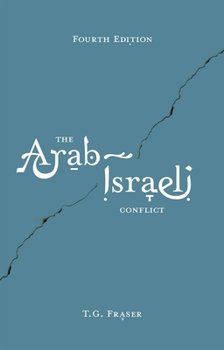The Arab-Israeli Conflict
Select Format
Select Condition 
Book Overview
T. G. Fraser provides a balanced and thoughtful analysis of one of the most tragic conflicts in modern history. From the creation of Israel to the situation today, this text follows the key events and issues arising from the partition of Palestine. The major regional wars and Palestinian Intifadas are examined, with a particular focus on the series of crises over Gaza.
This thoroughly updated edition features a new final chapter, covering events since 2007. It takes into account attempts by the USA to work towards a peace settlement, including John Kerry's initiative of 2013-14. These much-needed additions ensure that The Arab-Israeli Conflict remains an invaluable guide for students of the Middle East.
This thoroughly updated edition features a new final chapter, covering events since 2007. It takes into account attempts by the USA to work towards a peace settlement, including John Kerry's initiative of 2013-14. These much-needed additions ensure that The Arab-Israeli Conflict remains an invaluable guide for students of the Middle East.
Format:Paperback
Language:English
ISBN:1137387432
ISBN13:9781137387431
Release Date:August 2015
Publisher:Bloomsbury Publishing PLC
Length:264 Pages
Weight:0.75 lbs.
Dimensions:0.6" x 5.4" x 8.4"
Customer Reviews
1 rating
Balanced and User-Friendly for Novices
Published by Thriftbooks.com User , 19 years ago
I use the Fraser text in my undergraduate courses because of its brevity and its ability to break down the complexity of this conflict-laden relationship into a usable fashion. Fraser also provides a uniquely and consistent British/European perspective on the crisis that the other brief texts in this field ignore. Thus, it forces my students to think beyond their American blinders and, frankly, to realize that the U.S. is not the sole power involved or the power that should be forced to accept the lion's share of blame for the Arab-Israeli conflict. For example, students are often dumbfounded to find out that it was not the US that saved Israel from an early destruction in 1948, but the Soviet Union through Czechoslovakia. They say, "but we always learned that the US was to blame for . . ." Use this book if you want a sober examination and balance in what is no doubt an intractable situation with highly-partisan perspectives.






